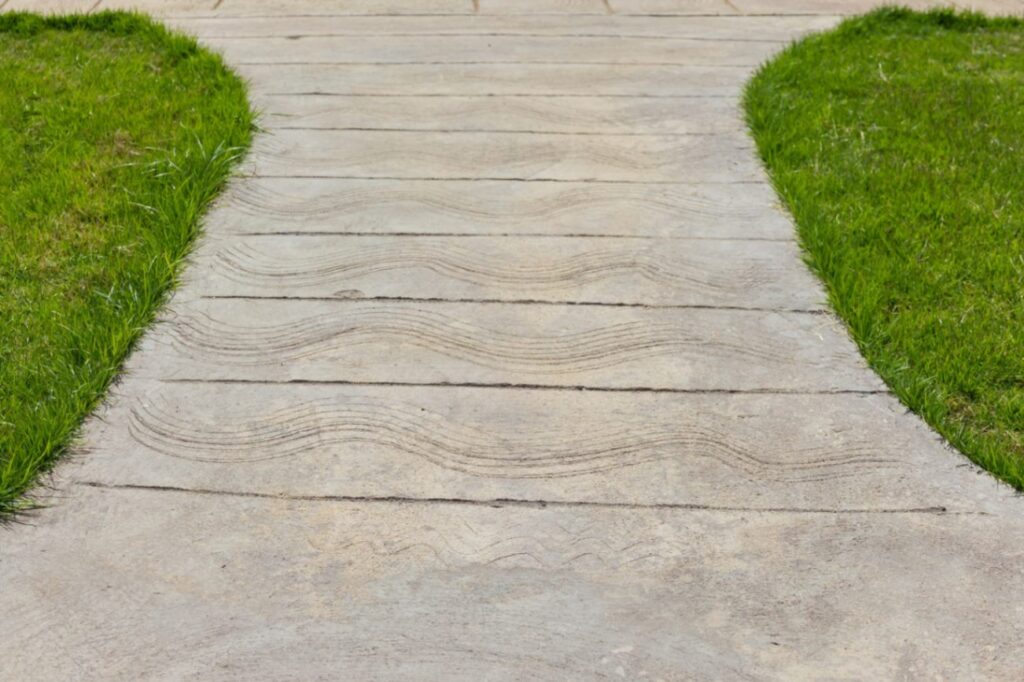When you’re deciding on walkway materials for your property, concrete stands out as a smart and practical option compared to gravel or pavers. While the upfront cost may be a bit higher, the long-term savings are worth it. Concrete’s durability and low maintenance needs help you save money over time. It can handle heavy foot traffic and tough weather, giving you a strong, stable surface for years. Plus, with so many style options, concrete can even boost your property’s value more than you might expect.

Key Takeaways
- Concrete walkways can last over 30 years, much longer than gravel or pavers, which means fewer replacements.
- They need very little maintenance—unlike gravel, which often needs weed removal and regular touch-ups.
- Concrete gives you a solid surface that resists erosion and shifting, making it safer and more durable.
- You can customize concrete with colors and patterns to make your walkway look great and match your property.
- It holds up well in extreme weather and offers better traction, reducing slips and cracks in bad conditions.
Cost-Effectiveness of Concrete Walkways
When planning a new walkway, it’s important to think about long-term value—and concrete delivers.
Although concrete may cost more upfront than gravel or pavers, that cost is balanced out over time. Concrete walkways need less maintenance and fewer repairs, so you’ll save money in the long run. Unlike other materials that can wear out quickly, concrete stays in great shape for years without needing to be replaced.
Those long-term savings make concrete a smart financial choice.
Durability and Longevity of Concrete
Concrete isn’t just affordable—it’s also incredibly strong and long-lasting.
When you choose concrete, you’re picking a material that can handle heavy foot traffic and rough weather. Gravel and pavers can shift or erode, but concrete stays solid and safe.
In fact, with proper installation and care, concrete walkways can last more than 30 years. That means fewer repairs, less hassle, and better value for your home over time.
Low Maintenance Requirements
One of the best things about concrete walkways is how easy they are to take care of.
Unlike gravel or pavers, which can be messy or grow weeds, concrete is a solid surface that needs very little upkeep. Just sweep off debris or hose it down when it gets dirty.
Because weeds can’t grow through it easily, you won’t waste time pulling them out. This means you’ll spend less time working on your walkway and more time enjoying your yard.
Aesthetic Versatility of Concrete
Concrete isn’t just strong—it can look great too.
You can pick from lots of colors to match your house or yard, and there are different design options like stamped or stained finishes to give it texture and style. Whether you want something modern or more classic, concrete can fit your vision.
This flexibility helps your walkway look good while staying strong and practical.
Weather Resistance and Performance
Weather can be tough on walkways—but concrete holds up better than most materials.
Concrete resists extreme heat, cold, and moisture, which helps prevent cracks and damage. It can also be treated to provide better grip, which reduces slipping during rain or snow.
Unlike gravel that shifts under your feet, concrete stays firm and level, giving you a safe and steady surface year-round.
Frequently Asked Questions
Can Concrete Walkways Be Installed Over Existing Gravel?
Yes, you can pour concrete over gravel, but the base needs to be properly prepared. Good prep helps prevent cracks and keeps the walkway stable for years.
What Colors and Textures Are Available for Concrete Walkways?
There are many options! You can choose from different colors—from natural tones to bold ones—and textures like smooth, stamped, or exposed finishes to match your style.
Are Concrete Walkways Slippery When Wet?
They can be, but adding slip-resistant finishes or textures helps reduce the risk. These features make the walkway safer, even in wet weather.
How Long Does It Take for Concrete to Cure?
Concrete usually takes about 28 days to fully cure. It gets strong quickly in the first week, but it’s important to let it finish curing to make sure it lasts.
Can I Add Heating Elements Under a Concrete Walkway?
Yes! You can install heating systems under concrete to keep it warm in the winter. This helps prevent freezing and makes it more comfortable to walk on.
Conclusion
To wrap it up, concrete walkways are a great choice compared to gravel or pavers. They’re cost-effective, super durable, and easy to maintain. On top of that, you get lots of design options to improve your home’s appearance and value. With strong performance in all weather and fewer repairs over time, concrete walkways are a smart investment for your property.
